While the COVID-19 pandemic has presented many challenges to tourist activities, the staff and volunteers at the historic Arch Street Meeting House (ASMH) in Philadelphia, Pa., have done a remarkable job of continuing to serve visitors, both in-person and virtually, during this time. The meetinghouse was closed for several months and re-opened with limited hours last July: first for the grounds, then for the meetinghouse itself. Guides now speak to visitors from behind a plastic shield, while masked and socially distanced. Select in-person events resumed in the fall, including scary stories for Halloween and a first Friday holiday celebration in December. There have also been several virtual presentations, including a sneak preview of the new exhibit space, a talk about the yellow fever epidemics of the eighteenth century, a program about Quakers and Christmas, and a 15-minute virtual tour available to watch anytime on YouTube. While the site is closed to the general public for the winter to focus on virtual programming, the plan is to reopen with limited hours in March (Friday and Saturday from 10 a.m. to 4 p.m.) and begin regular hours in April (Thursday through Saturday from 10 a.m. to 4 p.m., and Sunday from 12 to 4 p.m.).
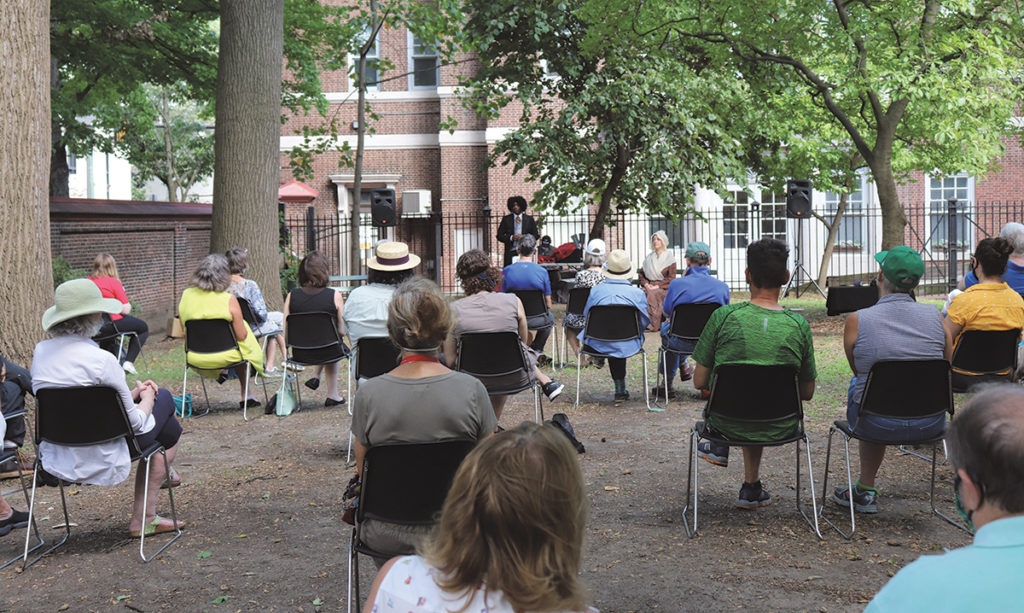
Outdoor performance of Under the Bonnet, a play about Lucretia Mott, James Mott, and Frederick Douglass, presented as a free event by Beacon Theatre Productions at ASMH in August 2020. Photo by Sean Connolly.
Left: The benches and horsehair cushions in the West Room are original to the space, and many predate the building. The oldest bench is from 1683.
Right: The author giving a tour to a book group from Moorestown, N.J., in 2014. Photos by Sean Connolly (left) and Lynn Calamia (right).
Since 1682, the property located at 320 Arch Street has been actively and continuously used by Quakers and the community. In 2011, Arch Street Meeting House became a National Historic Landmark and the Arch Street Meeting House Preservation Trust was formed. These two actions allowed Arch Street to commit to preserve the meetinghouse property and welcome the public in for programming to learn more about Quaker history. People from all over the world visit ASMH; they are met by guides and greeters who tell fascinating historical stories and share information about the practices and values of Quakers. I asked my fellow volunteers to share some of the stories that have most inspired and entertained them. Here are six of them, including one from my own experience:
A couple stopped by one day during my shift, and the woman told me that a few years before she had been in Philadelphia working on a production at the Arden Theatre, about two blocks from the meetinghouse. After passing the ASMH entrance many times, she decided to stop in and see what was behind the big brick wall, and so she took a tour. She told me, “I walked in a tourist, and walked out a Quaker.” She returned to Santa Fe, N.M., where she sought out a meeting and became a member. She was so excited to bring her husband back to show him where her spiritual journey began.
—Jackie Zemaitis, Moorestown (N.J.) Meeting
I volunteered to host a group of Brethren because my father had done his Civilian Public Service in Brethren camps. I did not know any other details about the group. When they arrived, I quickly noticed that they were all wearing clothes similar to Amish and Mennonite people. The men hung their hats on the hat pegs in the lobby that I had barely noticed before. When we moved into the East Room (the exhibition space), they asked if we sang in there, and if they could. When I agreed they broke into a beautiful four-part harmony of a couple hymns. It was very moving. I then invited them into the West Room (the meetingroom), and as I followed them in I noted that the men sat on one side and the women on the other. It felt like one of the photos from previous centuries had come alive before my eyes. We settled into a rich discussion of similarities and differences between Quakers and Brethren.
—Susan Hoskins, Newtown (Pa.) Meeting
On a Saturday afternoon when Jay Worrall and I were on duty, a group of African Christian clergy arrived asking for a visit. The group consisted of about 20 West African, French-speaking clergy, along with one from Kenya. They were accompanied by an interpreter. Having lived in Nigeria for five and a half years, I was thrilled by the opportunity to share the meetinghouse with them. One minister from Niger was wearing a very handsome riga (a prestige robe) and was quite surprised when I greeted him in Hausa. We had a wonderful visit. They were quite interested in the Quakers and the meetinghouse. The Kenyan member commented, “I want to say this respectfully, but first, thank you for the Quaker-built schools in Kenya. We certainly appreciate them, but why, when you have a beautiful name, ‘the Religious Society of Friends,’ do you refer to yourselves as Quakers?” Jay and I did our best to explain. The ministers enjoyed their visit and stayed somewhat beyond the planned time, and one said to their group organizer, “But this is what we want to see.”
—Marge Dawson, Merion Meeting in Merion Station, Pa.
Often the first thing guests say when they walk into the West Room is: “Oh, it is beautiful!” Many have visited Philadelphia’s other churches, temples, and the Cathedral Basilica of Saints Peter and Paul. In these places of worship, they see materials like marble, gold leaf, hand carved wood, brass altar rails, and stained glass windows, and items like oil paintings, statuary, and chandeliers. ASMH on the other hand is simply furnished with banks of plain wooden benches.
I think what prompts these people to use the descriptor “beautiful” is the sense of peace that simplicity brings coupled with the balanced architecture of the building and the room. The light coming through the crown glass windows is somewhat diffused by the imperfections of two centuries ago, and this pairs with the centuries-old benches, the original yellow pine floor, and horsehair-reinforced plaster walls. The openness and sheer size of the room invites the visitor to take a deep breath.
I tell visitors that it is okay to leave their hats on, that Quakers believe sacred space lies within and not in any particular physical space, but they treat the space with reverence anyway, and some tell me they feel the spirituality of it.
Some linger in the West Room seeming reluctant to leave. It is often with these people that I am privileged to make a deeper spiritual connection. Once I prayed quietly with a woman whose husband had just completed surgery at Wills Eye Hospital. She and her husband would not know for three days whether he would have sight. Once a violinist of the Dresden orchestra, scheduled to perform in the city that night, stayed after the group he was with had moved on. He needed to tell me the stories older orchestra members had told him of their life under Nazi rule. Once I had a 13-year-old boy tell me that he wanted to be a Quaker. He was worried, though, that he wouldn’t be accepted because he liked to play “shooter” games on his computer. The connection that volunteer guides at ASMH make with people around the world is a spiritual one that transcends time and place. They don’t all “get it” or necessarily care, but many do, and when they leave, they take with them a different understanding of the place for religion in their own lives.
—Carolyn Evans, Newtown (Pa.) Meeting
On a cold, rainy night just before closing, I received a bundle covered by a black trash bag. I knew it was a quilt for our exhibit. Had I opened the bag immediately, I probably would have handed it right back.
The quilt was all streaked and very brown. I washed it and noticed black spots all over. My heart sank and I thought, “I’ve ruined it!” I lifted this 60-pound mass of wet quilt and put it on the clothesline to dry. As it dried the spots went away. I realized that they were cotton seeds!
When this quilt was made, the quilter probably took a hand full of cotton, carded it, and inserted it between the two layers of fabric. Not only did she most likely card her own cotton and create this exquisite beauty, but she probably wove the fabric and spun her own thread as well—one can notice it’s uneven in texture, which gives more character to the beauty. The quilt has two branches or vines with a tulip, a rose, a daffodil, even a pineapple (symbol of hospitality) coming off a central stem—all in white!
As I was speaking about the quilt to a group, someone commented that it looked like there was writing at the top. We got a chair and found that the quilt was made in 1808 by Mary Cherrington, a Quaker from Lancaster County.
—Sandra Sudofsky, Gwynedd (Pa.) Meeting
My favorite thing is telling visitors about Quakers and Quakerism. Invariably I am asked one or more of these questions while giving tours: Are there still Quakers around? How do Quakers dress? How can Quakers worship without someone in charge? Do Quakers have to live together in a commune?
Interacting with visitors and helping them understand Quakers and Quakerism makes me so happy and speaks to my faith.
—Ruth Leach, Providence Meeting in Media, Pa.
Being a guide has led each of us to incredibly rewarding experiences, both personally and spiritually. Some tours are just information sessions, but sometimes there are people who have profoundly inspired me—like the muscular, tattooed, middle-age man who appeared to be confronting me about Quakers and our beliefs about LGBTQ people. When I told him about acceptance and love, he told me, with tears in his eyes, that his beloved son had died of AIDS. Or the handsome, young, gay, Russian man who told me about his fears of being arrested because of who he is. Or the mother and son who were in Philadelphia to get a one-day passport to fly to Germany to support their former exchange student, an only child, who had just lost both of his parents in a plane crash. Every volunteer has similar stories.


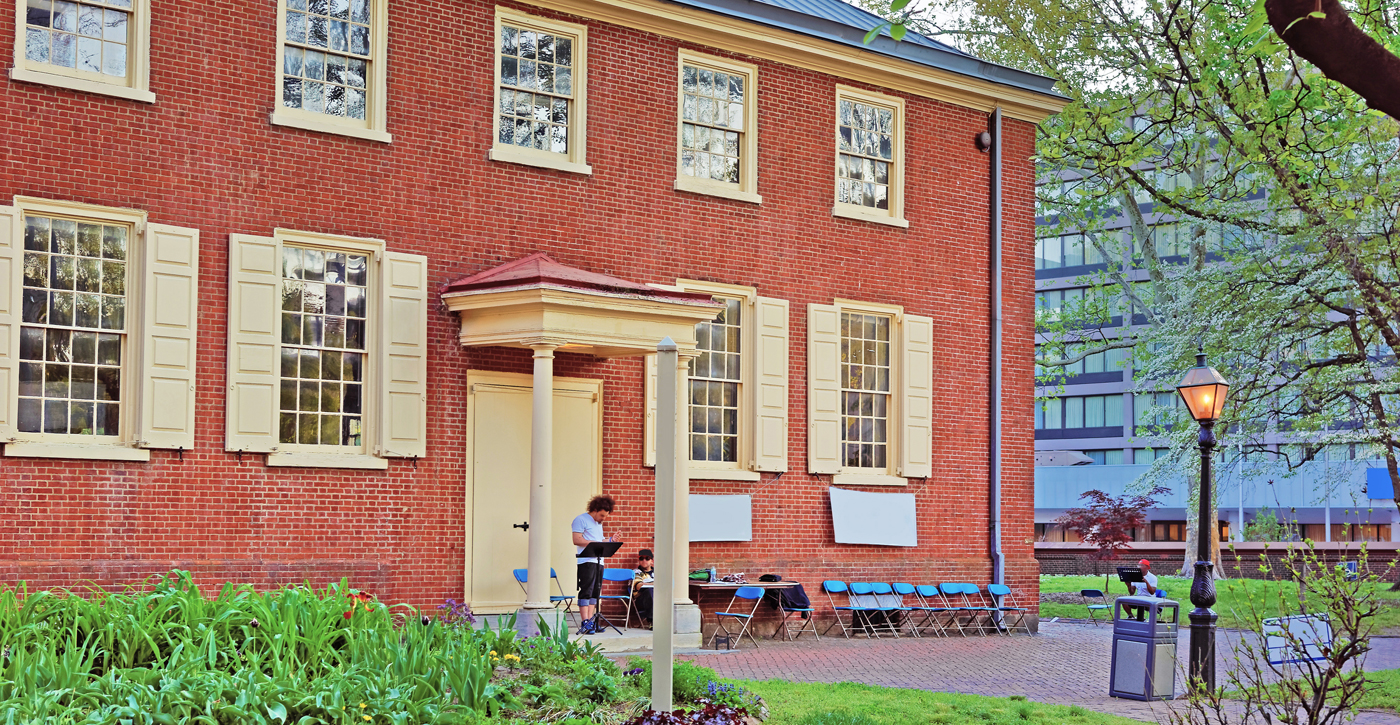
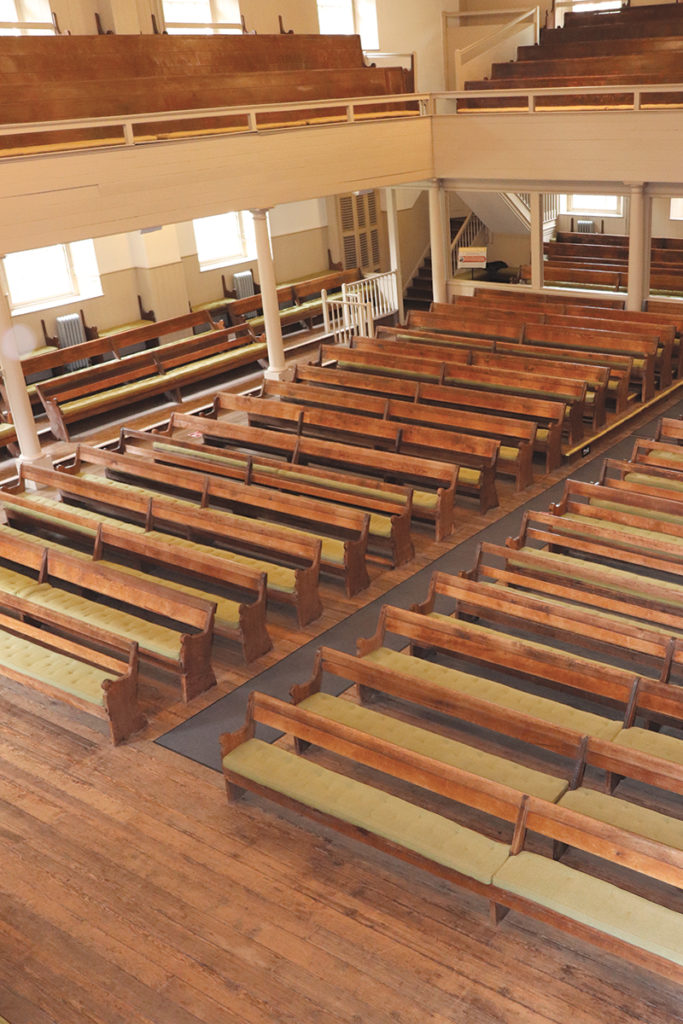
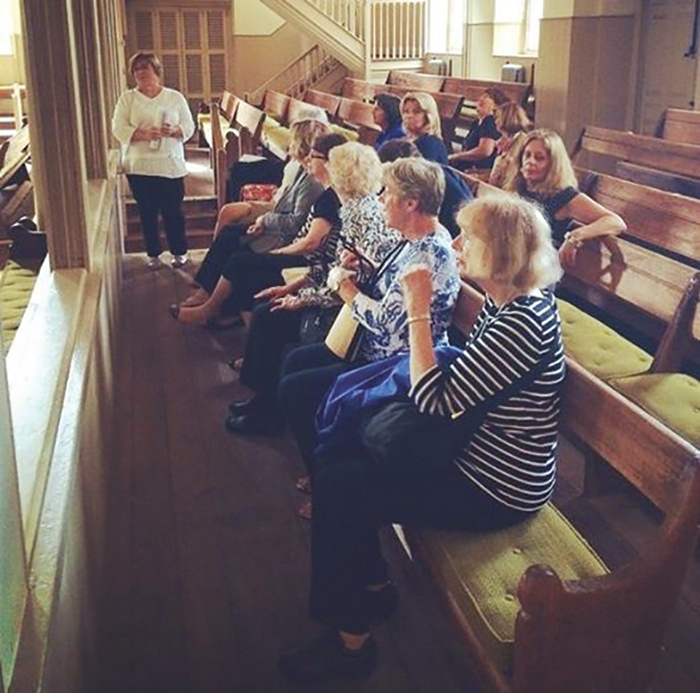
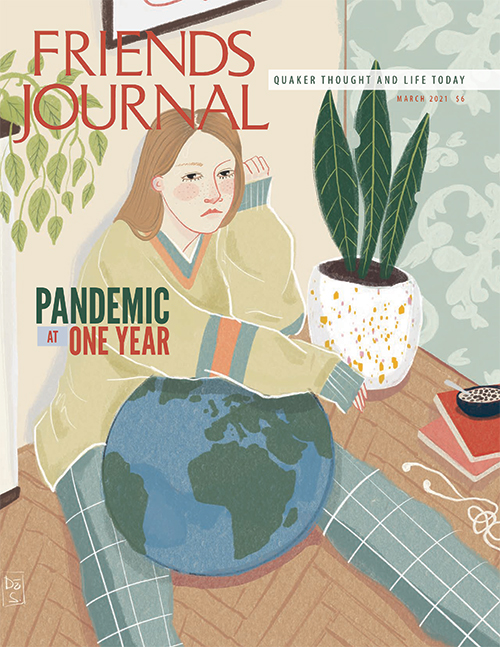
What a wonderfully refreshing article about experiences at Arch Street Meeting House! It took me back to the many times I was present at Arch Street for events and meetings of various kinds during the time we lived in Philadelphia. It’s good to hear the legacy of the witness carries on despite the pandemic. The stories by the volunteer guides of their experiences with visitors are all so touching. I especially like the story about the woman who said, “I walked in a tourist, and walked out a Quaker.” What a testimony to the power of place and ambiance to touch the soul and awaken a recognition of belonging! It’s a lovely example of the oft repeated story that many Friends tell of visiting a Quaker Meeting for the first and being overcome by the feeling of having come “home.”
I am a convinced Friend from a Programmed background. I have been to The Arch Street Meeting three times, once with my wife.
I am a big fan of waiting on the Spirit to conduct a meeting and have stopped in to unprogrammed meetings dozens of times in my travels around the U.S. My wife is more kinetically oriented and has trouble sitting still for long periods. My view is that it is more spiritually productive to sit quietly and listen rather than singing or following along with the pastor’s readings. Our differences haven’t created trouble between us. We have been married for 55 years.
I was very interested to learn more about the split between the ‘country Friends’ and the ‘city Friends’. I was told that the split started at the Arch Street Meeting, and asked for more information. The Docent was very helpful and talked with me for about 30 minutes about the split. He also gave e a list of books to read.